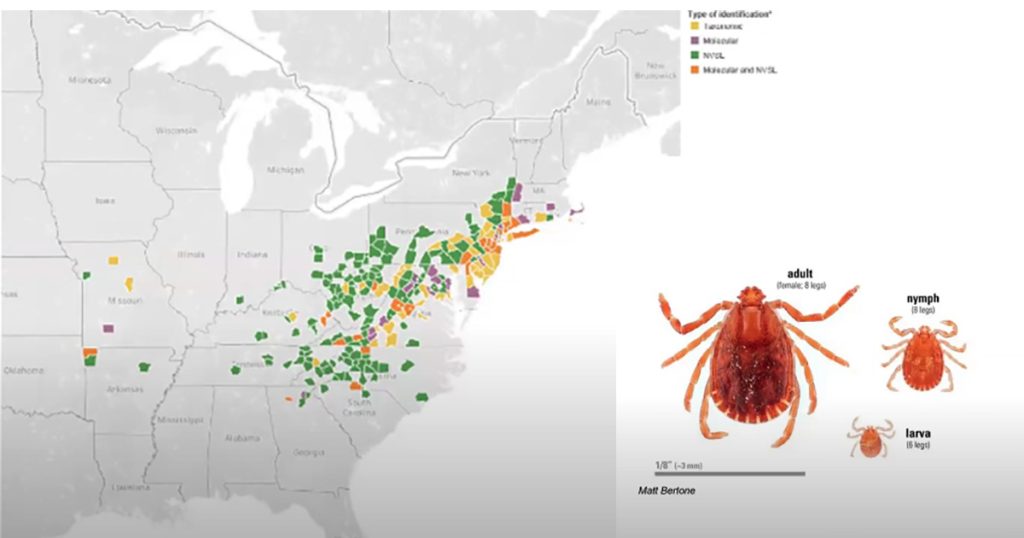
Asian longhorned ticks (ALHT) (Haemaphysalis longicornis) are special. If one tick makes it to a new location, it can begin a new ALHT population all by itself. This is because most ALHTs are female, and they can clone themselves, laying up to 2,000 eggs. This reproductive superpower means that treatment for ALHT infestations may need to begin sooner than we would treat other tick population explosions.
In this webinar, Dr. Andreas Eleftheriou, a veterinary public health resident in the Department of Veterinary Preventive Medicine at The Ohio State University, shared recent research on the ALHT from Ohio.
Ticks sampled in this study were free of most pathogens that can infect people, although lab studies show they can transmit Rocky Mountain Spotted Fever (Rickettsia rickettsi). Still, ALHTs are significant for livestock producers because when high populations occur, ALHTs can cause excessive blood loss, reduced growth and reproduction; and even death in cattle. They are also known to spread bovine theileriosis (Theileria orientalis), which has been found in Virginia and its nearby states and also in Ohio.
Another unique characteristic of ALHTs is that they were found in multiple habitat types, from grasslands to forests and habitat edges. While ALHTs are known to use a variety of hosts for blood meals, they do prefer larger mammals from opossums, raccoons and deer to cattle and sheep. In the Ohio study, they were most active from June to October. More details are available in the full webinar recording.
There are several useful resources about Asian longhorned ticks:
- More information about the first established Ohio ALHT population.
- Educational videos about ticks and tick-borne diseases, created for livestock producers
- Ohio tick news and updates
- USDA Animal and Plant Health Inspection Service (APHIS) ALHT website
- Two ALHT pest alert summaries (USDA APHIS) (Regional IPM Centers–free prints available).


